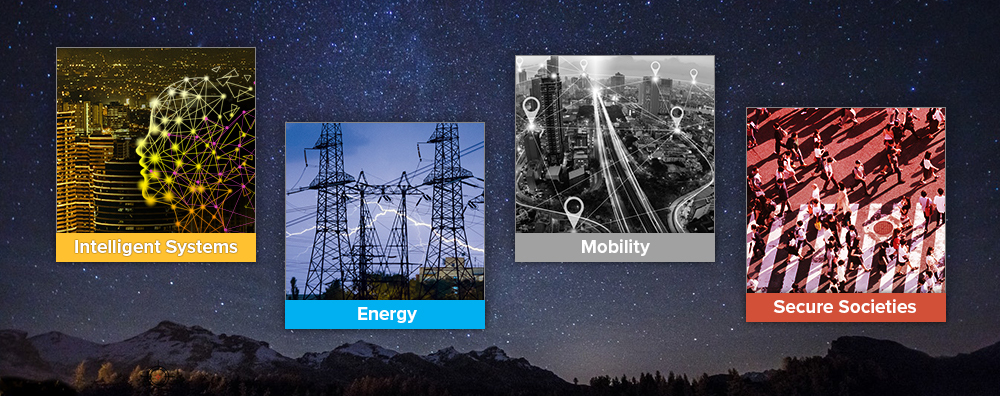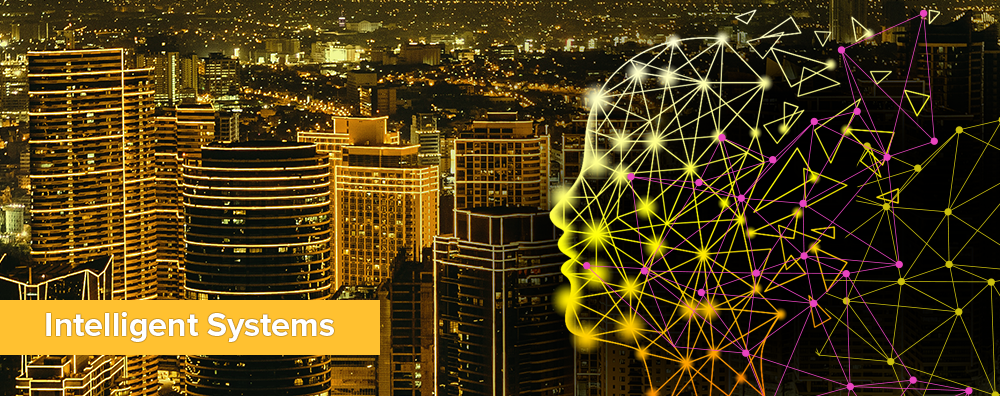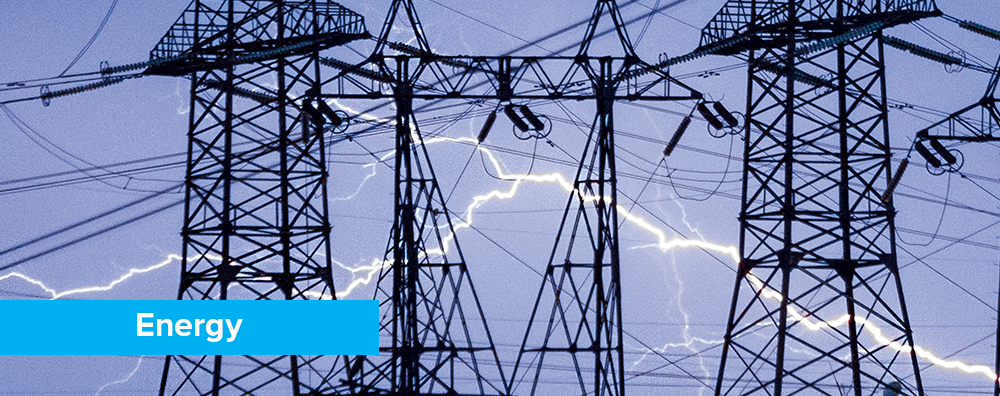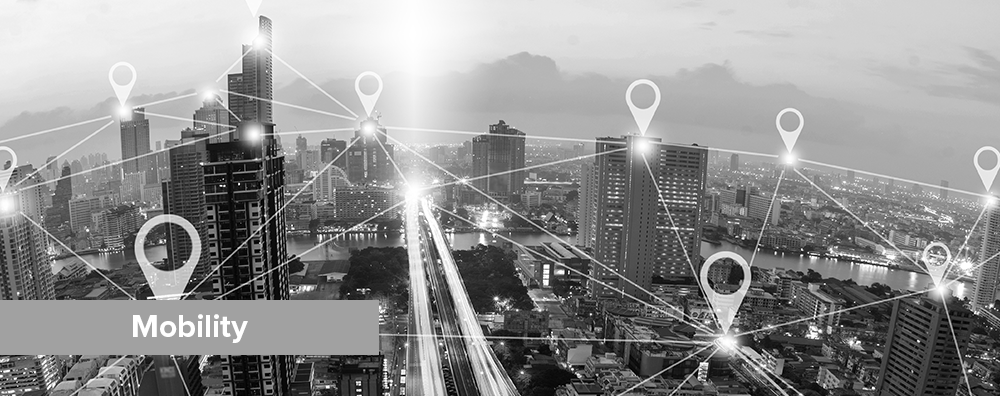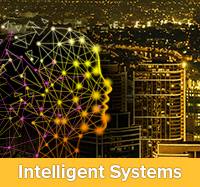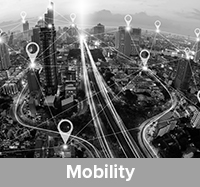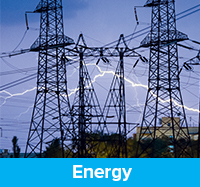Meteorological Research and Innovations
UBIMET aims to set new standards in meteorology. Through continuous research and development, constant optimization of forecasting tools and the development of new products, UBIMET is a leader in the field of meteorological services. The daily work is inspired by the demand for high-precision meteorology.
International research partners
UBIMET invests more than 25% of its turnover in research and development every year. Partnerships with international research institutes, renowned universities and industrial companies secure the company’s innovation leadership and help to further expand it.
Since 2006, UBIMET has implemented over 50 research projects in the fields of intelligent systems, energy, mobility and a secure society. UBIMET develops concepts for energy-efficient, intelligent buildings, traffic concepts, participates in data ecosystems and produces precise warnings and climate forecasts for infrastructure operators and the energy industry.
UBIMET is currently also a FFG Frontrunner again!
INTELLIGENT SYSTEMS
- SECAI (2022 to 2025): The bilateral cooperation project SECAI is developing intelligent, ecologically sustainable and quickly implementable solutions for heating private homes in the smart living sector by using AI in the edge cloud environment. In the project, weather data helps to forecast heating requirements and optimize control based on this.
- PISTIS (2023 to 2026): The EU project PISTIS promotes and develops incentives for the trustworthy, secure and fair exchange and trading of interoperable data assets. To this end, 31 European organizations from 11 countries are developing a reference platform for the sharing, federated exchange, trading and monetization of interoperable datasets.
- transpAIrant.energy (2024 – 2027): The transpAIrant.energy project has two main objectives: (1) the development of innovative generative AI algorithms to create probabilistic forecasts for energy system-relevant variables and publish them live on a transparent platform and (2) the use of these forecasts to optimize flexible renewable energy systems in order to make their operation more economical, efficient and sustainable.
ENERGY
- DEER (2022 – 2025): In the course of the energy transition, decentralized consumption and generation plants as well as battery storage systems must be integrated into the electricity system. The project “Decentralized Redispatch (DEER): Interfaces for the provision of flexibility” is investigating solutions for integrating decentralized systems into the higher-level redispatch process.
- SOLARIS (2024-2028): In order to promote the development and integration of PV systems in Europe and beyond, more efficient, reliable and profitable operation and maintenance strategies must be found. In this context, the EU SOLARIS project will bring together 15 partners for 48 months to develop and demonstrate a complete package of physical and digital tools for improved prediction, operational performance and maintenance, leading to a high performance index (90%) and high availability (>98%) of PV installations and reducing energy costs by 10%.
- TWINVEST (2024 – 2028): The EU TWINVEST project aims to lay the foundations of a universal, open-source and cyber-secure digital twin to provide investors in onshore wind farms with valuable insights into current operations and future investments. Making investment decisions in the wind energy sector is a complex undertaking, as various factors such as energy production, maintenance, investment framework and wind farm characteristics need to be evaluated. The aim is to create a digital twin that seamlessly integrates and takes into account all these factors.
- Sunny4Urban (2024-2027): Sunny4Urban is developing an interactive planning tool that specifically exploits the solar potential of urban areas. By combining precise meteorological data, digital 3D city models, and high-resolution climate simulations, the tool supports the efficient planning of photovoltaic systems and sustainable energy concepts. UBIMET provides the meteorological basis for this, including long-term forecasts of solar radiation and the analysis of regional weather data.
MOBILITY
- Community drone (2022 – 2024): The joint drone project develops concepts and methods for the joint use of drones and determines the associated potential for increasing efficiency and reducing costs. A central component is the simulative proof of function of a multi-user/multi-mission planning system for automated mission planning.
- KI.M (2023 – 2026): In order to be able to consider the digital change in the cross-modal planning & control of urban mobility in a timely manner, KI.M is to create access to mobility-relevant data and interfaces in the sense of a digital portfolio for various tasks in the context of transport & mobility through the use of artificial intelligence.
- KlimZug (2021 – 2024): The KlimZug project investigates climate-related changes in the frequency and intensity of extreme weather events near ÖBB’s rail infrastructure and further develops the ÖBB weather warning system by optimizing the meteorological measuring network along the rail infrastructure, improving the forecast of convective precipitation and forecasts for forest fire and torrential stream hazards.
SECURE SOCIETIES
- EARWING (2023 – 2026): Lightning and weather data as well as grid sensor data should help to trigger fault and failure warnings for electrical energy supply grids at an early stage. Spatially distributed grid sensors installed in various low-voltage grids provide grid quality data, which is combined with lightning and weather data and evaluated using artificial intelligence (AI.)
- HeatProtect (2024 – 2026): In the HeatProtect project, co-benefits between climate protection measures in the health sector and measures to mitigate heat-related health problems are being developed. In the area of acute measures, a heat early warning system is being designed. In the long term, the heat-related burden on the Austrian healthcare system will be modeled, taking into account, for example, aging.
- KlimaNetz (2023 – 2026): The aim of the KlimaNetz project is to identify the effects of climate change on network management, to identify the technically and economically optimal countermeasures, to highlight hurdles to implementation and to mark in grid risk maps in which risk areas the implementation of which options for action makes sense.

